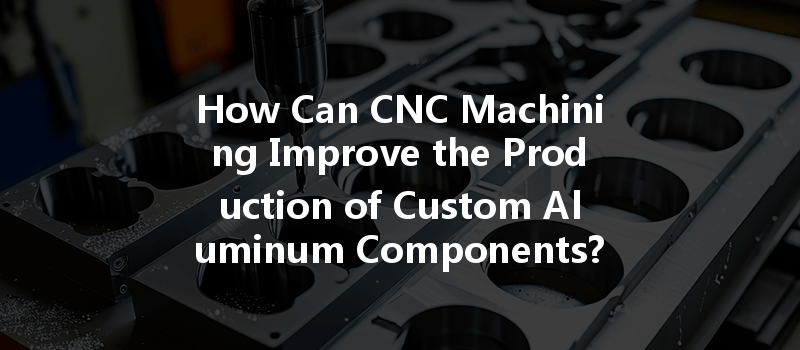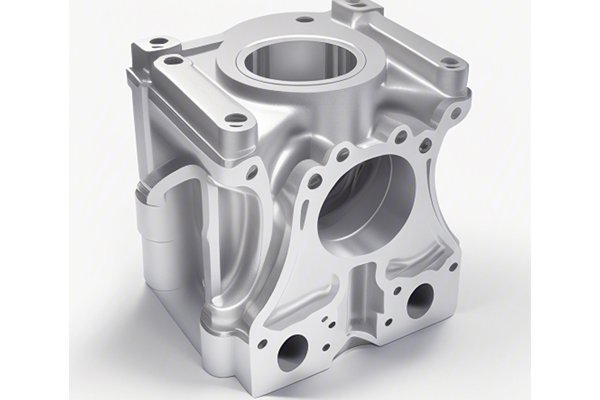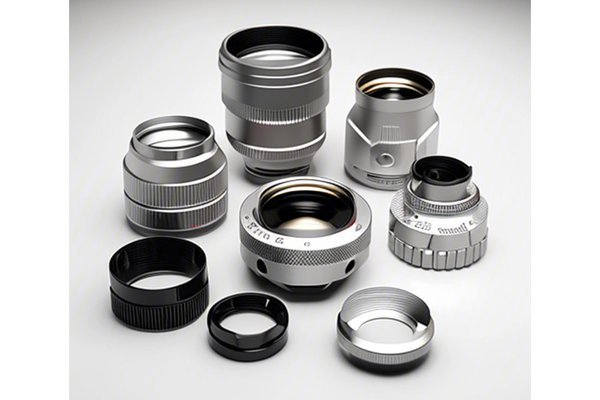Did you know that aluminum is one of the most widely used metals in the manufacturing industry, with applications ranging from aerospace to automotive, and even consumer electronics? According to a report by the Aluminum Association, global aluminum consumption is expected to reach over 60 million tons by
Understanding CNC Machining
CNC, or Computer Numerical Control machining, is a manufacturing process that utilizes computerized controls to operate and manipulate machine tools. This technology has revolutionized traditional machining by allowing for greater accuracy, consistency, and repeatability. CNC machining involves the following key processes:
The Benefits of CNC Machining Custom Aluminum Components
One of the foremost advantages of CNC machining is its ability to produce intricate designs with micrometer-level precision. This is especially critical in industries like aerospace and automotive, where accuracy can be a matter of safety. CNC machines can maintain tolerances of ±0.01 mm, ensuring that every part meets strict specifications.
While the initial setup costs for CNC machining may be higher than traditional methods, the long-term savings can be substantial. CNC machines operate continuously with minimal downtime, which significantly boosts production rates. Additionally, the reduction in human error minimizes waste and rework costs, making CNC machining a financially viable option for bulk production.
Aluminum comes in various grades, each with its unique properties. CNC machining allows for the effective utilization of different aluminum alloys, such as 6061, 7075, and
CNC machining allows for automated production runs, eliminating many manual processes. This technological shift not only leads to faster production times but also enables manufacturers to scale operations easily, responding quickly to market demands and fluctuations.
The software-centric approach of CNC machining facilitates rapid prototyping and design iterations. Adjustments can be made in the CAD model, allowing for quick modifications to be implemented in the production process. This adaptability is invaluable in industries where product design is continually evolving.
Challenges in CNC Machining of Custom Aluminum Components
While CNC machining offers numerous benefits, it is not without its challenges. Common issues that manufacturers may encounter include:
CNC machining tools are subject to wear over time, which can impact the quality of produced parts. Regular maintenance and tool replacement are essential to ensure optimal performance and prevent production delays.
Aluminum machining generates heat, which can lead to thermal expansion and affect the accuracy of machined components. Employing techniques such as coolant application and optimized feed rates can mitigate these effects.
The setup time for CNC machines can be relatively high, particularly for custom orders. Although programming can be streamlined, initial setups may require extensive tooling changes, which can add to lead times.

Best Practices for CNC Machining Aluminum Components
To maximize the benefits of CNC machining for custom aluminum components, consider the following best practices:
Selecting the appropriate aluminum alloy for your specific application is crucial. For example, 6061 aluminum is known for its good mechanical properties and weldability, making it suitable for general applications. In contrast, 7075 aluminum offers higher strength, making it ideal for aerospace components. Understanding the properties of various alloys helps in producing parts that meet performance requirements.
The machining parameters, including speed, feed rate, and depth of cut, should be carefully optimized to enhance productivity and improve surface finish. Finding the right balance can also reduce tool wear, prolonging the lifespan of cutting tools.
Using coolants during machining can significantly reduce heat generation and enhance the lifespan of tools. Additionally, proper lubrication prevents material buildup on tools, ensuring clean cuts and accurate dimensions.
Understanding the specific tolerance and finish requirements of your components is essential. This knowledge enables manufacturers to adjust machining strategies accordingly, ensuring that parts meet the necessary quality standards.
Investing in high-quality CNC machines and companion software can lead to better manufacturing outcomes. Advanced CNC machines come equipped with features such as real-time monitoring, which can help identify issues or inefficiencies during production.
Case Studies in CNC Machining of Custom Aluminum Components
Case Study 1: Aerospace Industry
A leading aerospace manufacturer needed precision components for a new aircraft model. They turned to CNC machining for its ability to create complex geometries and maintain strict tolerances. By utilizing 7075 aluminum alloy, the company achieved lightweight yet strong components that contributed to the overall performance of the aircraft while also reducing manufacturing lead times.
Case Study 2: Automotive Industry
An automotive parts supplier sought a solution for their custom gear components. Using CNC machining, they quickly transitioned from prototype to full-scale production, allowing them to meet the rising demand for their product. The adaptability of CNC machining enabled them to implement design changes swiftly, enhancing their competitiveness in the marketplace.
Tools and Techniques for Effective CNC Machining
To achieve the best results in CNC machining custom aluminum components, manufacturers can employ several advanced tools and techniques:
CNC machining has undoubtedly transformed the landscape of manufacturing custom aluminum components, offering unparalleled precision, cost-effectiveness, and scalability. Understanding the benefits, challenges, and best practices associated with CNC machining enables manufacturers to make informed decisions and improve production outcomes. By implementing advanced tools and techniques, they can further enhance efficiency and quality in their operations.
As the demand for custom aluminum parts continues to grow, it is crucial for manufacturers to remain abreast of the evolving technologies and methods in CNC machining. Investing in these practices not only helps meet market demands more effectively but also positions businesses for continued success in an increasingly competitive landscape. By embracing the principles outlined in this blog, businesses can streamline their operations and harness the full potential of CNC machining for custom aluminum production.
Whether you are a seasoned manufacturer looking to optimize your processes or a newcomer to the world of CNC machining, the insights shared here are worth considering as you weigh your production strategies in the rapidly evolving manufacturing landscape. The advancement and implementation of CNC technology are paving the way for the future of manufacturing, making it an essential focus for anyone in the industry.






